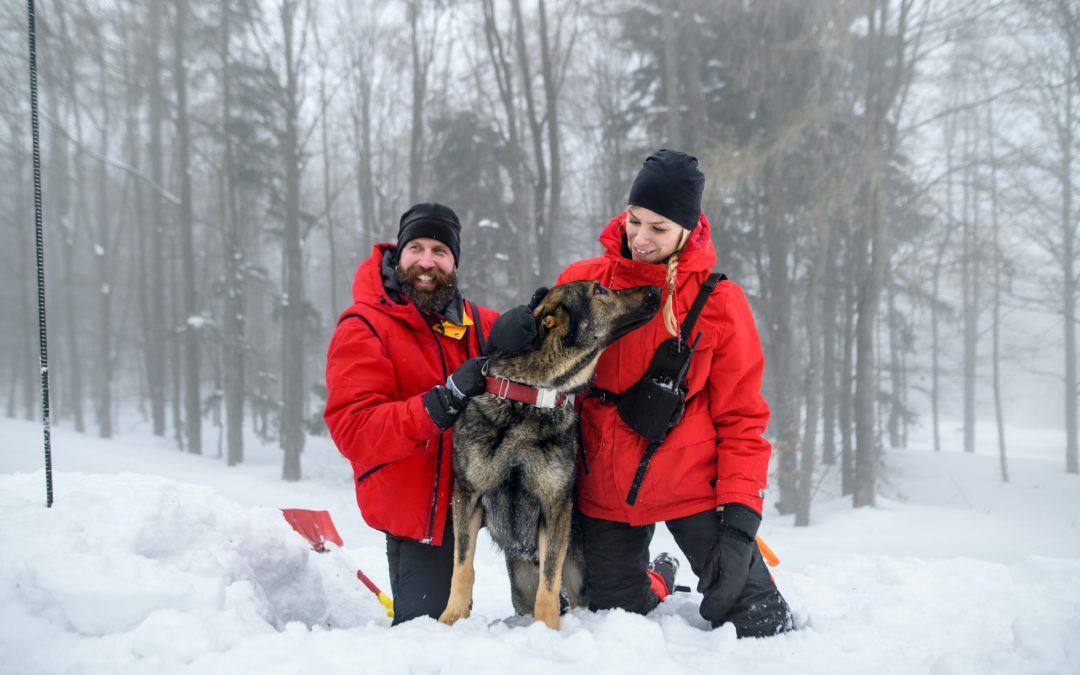January is National Train Your Dog Month. Based on what I have seen out in the world, as well as inside our veterinary hospital, there is no general standard for what a “trained dog” looks like. People have different expectations for how dogs should “behave” and what types of behavior they find acceptable or not. Unfortunately, this can sometimes cause problems between people and animals. So, why should you train your dog? What are the benefits? What does dog training involve? How does one actually train their dog? These are all great questions and the topic of this month’s blog.
Probably one of the most important aspects of this topic are the benefits of training your dog. Training helps your dog build confidence and become a part of your family. Training strengthens the bond you have with your dog and helps to facilitate a loving and respectful relationship. Dogs are pack animals, and training will teach them to look to you as pack leader: to guide their behavior and reward them when they please you. Training helps keep pets from becoming bored and destructive. Basic training also ensures that your pet will be respectful of others; it is your responsibility to teach your pet to be safe around other people and animals. Without proper guidance, dogs may develop inappropriate or, aggressive behaviors that may injure others and ultimately lead to a less fulfilling life for your pet. The benefits of having a pet with “good manners” are 100% worth the effort to train your dog in basic obedience.
The Wikipedia definition of “dog training” is “the act of teaching a dog particular skills or behaviors.” There are many different methods, techniques, and styles of training. The basic premise is to modify your pet’s behavior by getting them to do what you want. I am a firm believer in reward-based training; give your pet a command, and when they do what you want (sit down when you ask them to), give them a reward (food, toy, or praise). Repeat these steps until they make the association and learn the command. Obviously, there is more to it than just giving your pet a command; you may need to physically guide them into the behavior (gently press them into a sitting position as you say sit). It takes time and effort, but you can make training sessions a fun experience for both you and your pet. Basic training involves the typical commands/skills: sit, stay, off, come, heel, leash walking, etc. Training also includes SOCIALIZATION. Socialization is, I think, the most important aspect of training your dog. It forms the basis for good manners and appropriate behavior for the rest of your dog’s life. The other commands come with time and repetition and are often a result of socializing your dog.
So now you hopefully realize that it is a good idea to train your dog. How do you do it? There are many possible ways to learn how to train your dog. You can buy a book, watch videos, hire a trainer to work with, send your dog to training camp, take classes with your dog, or just spend time with your dog and figure out how you can work together to reach your goal. Your goal should be the guide for how you decide to train your dog. If they are going to be working dogs or you want your dog to have a specific skill set (seeing eye dogs, police dogs, hunting, agility, etc.), it may be best to hire a trainer or put your dog in “school.” If you have a lot of free time to spend working with your pet, get a book or watch some YouTube videos and develop your own training program. You may want to investigate tools to help support your training efforts: collars, leashes, clickers, and LOTS of rewards. Research your local options for classes and supplies. Pet stores often offer classes or know of local trainers in the area. Veterinarians are another resource to approach for information.
Now that you know the basics of why and how to train your dog, it is time to get started. Starting young is ideal; puppies are a clean slate with which to start and are very impressionable. You are also just beginning to form a bond with your puppy, and training is a great way to nurture a strong, lifelong relationship. That being said, your older dog already knows you and loves you; dogs generally want to please you and are very capable of learning new tricks. So, take some time, have patience, and above all, have fun!

